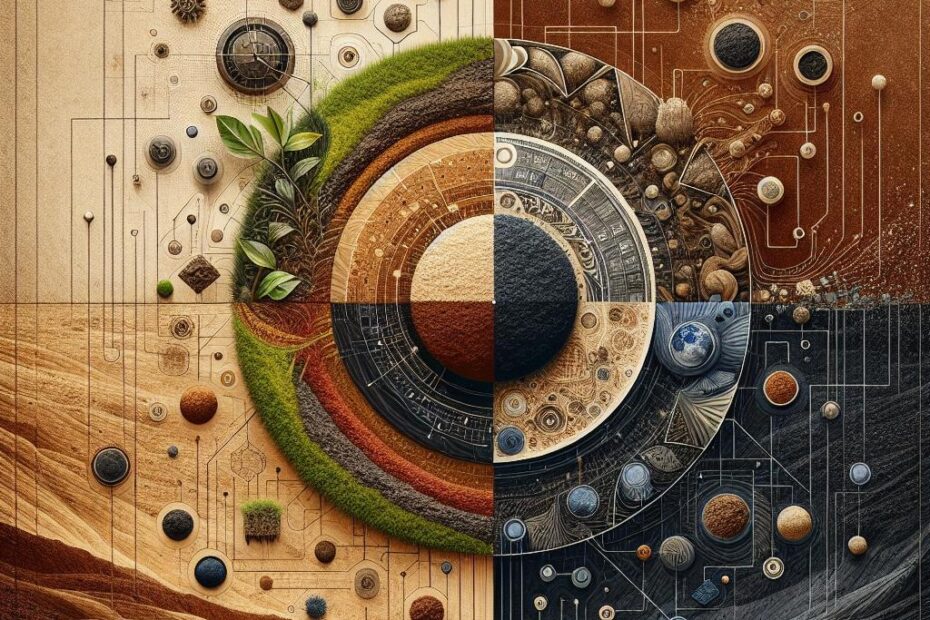The Difference Between Dirt and Soil: Explained
Many people use the terms “dirt” and “soil” interchangeably, assuming they refer to the same thing. However, there are key differences between the two that are important to understand, especially for gardeners, farmers, and those interested in environmental science. In this article, we will explore the distinctions between dirt and soil, their characteristics, and their significance in various contexts.
What is Dirt?
Dirt is commonly associated with something dirty, messy, or undesirable. It is often thought of as the substance you track into your home on your shoes or the grime you scrub off your hands after working in the yard. However, in a scientific sense, dirt is simply unorganized, loose material on the ground that lacks nutrients and structure. It is typically devoid of organic matter and is not conducive to plant growth.
What is Soil?
Soil, on the other hand, is a complex substance that supports plant life and provides essential nutrients for growth. It is a living, dynamic system that consists of minerals, organic matter, water, air, and countless microorganisms. Soil is formed through the weathering of rocks and the decomposition of plant and animal matter over time. It has distinct layers, known as horizons, which play a crucial role in its fertility and structure.
Key Differences Between Dirt and Soil
- Dirt is unstructured and lacks nutrients, while soil is organized and provides the necessary elements for plant growth.
- Dirt is often seen as undesirable and dirty, while soil is valued for its fertility and ability to sustain life.
- Dirt is typically found on the surface, while soil extends deeper into the ground and has distinct layers.
- Dirt is easily eroded and compacted, while soil has a stable structure that allows for good drainage and aeration.
Benefits of Soil
Healthy soil is essential for food production, biodiversity, water filtration, and carbon sequestration. It is a vital resource that sustains life on Earth and plays a critical role in ecosystem functioning. By supporting plant growth and providing habitat for a diverse range of organisms, soil contributes to environmental sustainability and human well-being.
Practical Tips for Improving Soil Health
1. Test your soil: Get a soil test to understand its pH, nutrient levels, and organic matter content. This will help you determine what amendments or fertilizers are needed.
2. Add organic matter: Incorporate compost, manure, or cover crops to improve soil structure and fertility.
3. Avoid compaction: Minimize soil compaction by avoiding heavy machinery on your land and using mulch to protect the soil surface.
4. Rotate crops: Practice crop rotation to prevent nutrient depletion and reduce the risk of pests and diseases.
Case Study: The Importance of Soil Conservation
In the United States, the Dust Bowl of the 1930s serves as a stark reminder of the consequences of soil degradation and erosion. Unsustainable agricultural practices, coupled with drought and wind erosion, led to large-scale soil loss and ecological devastation. Through soil conservation measures such as contour plowing, terracing, and cover cropping, farmers have been able to protect and restore soil health in vulnerable areas.
First-Hand Experience: My Journey to Rebuilding Healthy Soil
After years of struggling with poor soil quality in my backyard garden, I decided to take action to improve its fertility and structure. By adding organic matter, practicing no-till gardening, and incorporating diverse plant species, I was able to transform my lifeless dirt into vibrant, thriving soil that now supports a wide variety of crops and beneficial insects.
Conclusion
In conclusion, the difference between dirt and soil lies in their composition, structure, and function. While dirt may seem unimportant or unsightly, soil is a precious resource that sustains life and nourishes ecosystems. By understanding the distinctions between the two and taking steps to care for and protect our soil, we can ensure a sustainable future for generations to come.
